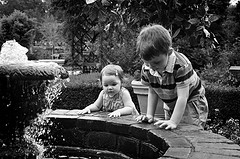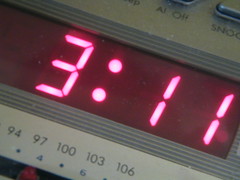Cognitive Development
Cognitive Development
(see full Glossary)
Kindergarten children are very active explorers (Fig. 1) of their environment. They are interested in everything and their desire to learn is limitless. Described by Piaget as “little scientists” and by many researchers as “sponges,” they are ready, willing and able to learn. At the same time, they are still in the early childhood years, and this must be kept in mind when we try to teach them something. Although they are perfectly capable of engaging in simple procedures or operations (see full Glossary) (Fig. 2), these need to be very basic, and about something the child is quite familiar with.
Figure 1: Explorers
Figure 2: Procedures or operations
Most kindergarten children at this age:
- are eager to try new things;
- can pay attention for up to ten minutes at a time;
- can draw a picture of themselves, with more than just a head and body (Fig. 3);
- can tell their age, and how old they will be next year;
- are beginning to use logic (for example, “I guess we can’t make it to grandma’s house today, because she is sick”);
- are starting to understand cause and effect (for example, “if I hadn’t left my bike on the front lawn, it wouldn’t have been stolen”);
- know their address and phone number;
- know a lot of words that describe objects (see full Glossary) by their sizes, shapes, colour, etc. (for example, tall/short, big/small…);
- know a lot of “how much” or “how many” words (see full Glossary) that refer to amount or quantity (for example, a lot, a little, none, all…);
- know a lot of words that describe space and/or distance (see full Glossary) to a place or location (for example, far away, close by, over, under…);
- know most colors;
- sort objects according to a common characteristic (for example, grouping a fork, a knife and a spoon together because these are the things we eat with);
- can retell a simple story;
- can re-tell something that happened in the correct sequence (for example, what happened first, what happened last…);
- understand that some events happen before others (for example, morning comes before noon);
- are starting to understand that some objects are “long”, others are “longer” and others are the “longest;”
- can tell time with a digital clock (Fig. 4);
- can tell which day it is;
- can list the four seasons (Fig. 5): winter, spring, summer and fall;
- can list the seven days of the week;
- can sometimes list the twelve months of the year;
- ask a lot of “how” and “why” questions;
- are starting to understand that some things are “alive” (Fig. 6), like animals, and others are not, like rocks;
- know certain holidays (Fig. 7), like the New Year’s celebration.
Figure 3: Drawing a picture (more than head and body)
Figure 4: Digital clock
Figure 5: Four seasons
Figure 6: Alive
Figure 7: Holidays
Did you know?
- Children at this age enjoy imitating (see full Glossary) others. When they do so, they may pretend that they are Mom, Dad, the neighbour’s cat or the post man. They don’t do that just for fun, they also do it to learn about the world around them, and it is an essential part of their development.
- Children whose parents read (Fig. 8) to them develop great listening skills. Reading to your child not only helps them develop some pre-academic skills, but it also helps them develop basic cognitive skills, like listening.








0 comments
Kick things off by filling out the form below.
Leave a Comment